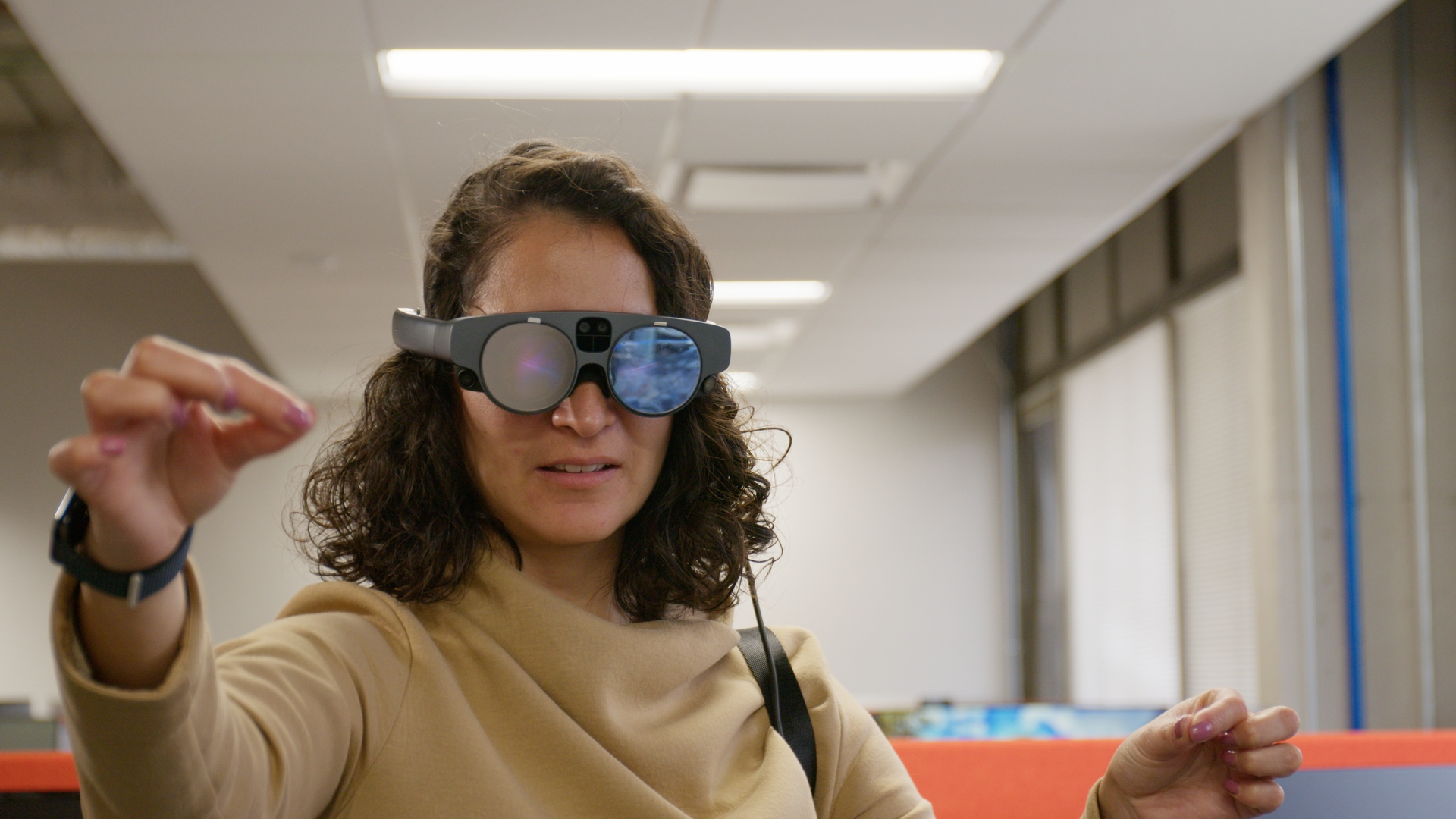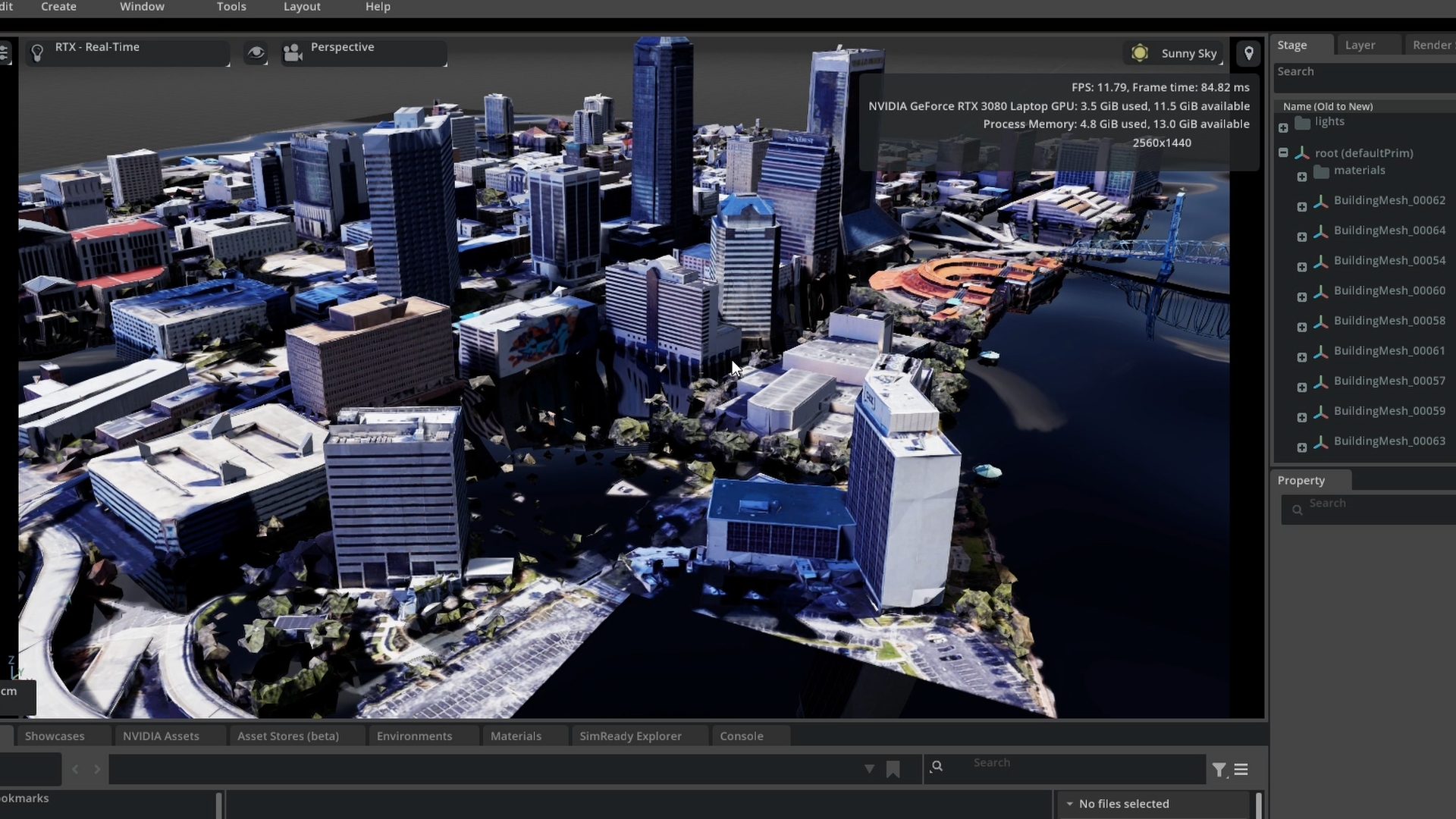Imagine a virtual Jacksonville, viewable through an augmented reality headset, that shows the intricate aspects of the city in 3D. This is the future of sustainable urban planning, and the University of Florida is leading a project that will leverage artificial intelligence and digital twin technologies to make it happen. By building a virtual model of a section of the city, UF researchers will be able to test future land use and climate scenarios while visualizing infrastructure investments. This information will allow decision makers to see the potential real-life impacts on the lives of residents and help city planners adapt to changing conditions. And the Jacksonville pilot may be just the beginning.
Florida faces an aging infrastructure, a changing environment, and rapid population growth. Digital twin technologies can help decision makers make data-driven choices to sustain Florida’s natural resources, protect the community’s health, ensure economic prosperity, and enhance the benefits of future urban planning projects.
As the state’s flagship land-grant research university, UF is capitalizing on its research capabilities in order to benefit the state of Florida. Last year, UF President Ben Sasse allocated $1.75 million in strategic funding from the Florida Legislature to build Florida’s Digital Twin. The project – led by Christine Angelini, Ph.D., an associate professor and director of the UF Center for Coastal Solutions – aims to harness digital twin and AI technologies that will help the state plan for uncertain scenarios.
Using the area of Jacksonville as a pilot location, Florida’s Digital Twin will reveal details and insights about buildings, roads, and wastewater infrastructure. Jacksonville was chosen to kickstart the project due to the city’s close relationships with UF Health researchers and local stakeholders.
And UF certainly has what it takes to build digital twins. HiPerGator, the fastest supercomputer in U.S. higher education, is on the UF campus, as are multiple experts in AI disciplines. UF also has a partnership with the AI tech company NVIDIA, and access to big data on Florida’s environmental, health, and infrastructure systems.
“We realized that, as an institution, we have interdisciplinary breadth and depth, but we’re not channeling that expertise to deliver as much of an impact to the state of Florida as we possibly can,” Angelini said.
To channel that expertise, various units on campus have joined forces to collaborate on the digital twin project: the Herbert Wertheim College of Engineering; the College of Agricultural and Life Sciences; the College of Medicine; the College of Journalism and Communications; the College of Design, Construction and Planning; UF Research; and UF Health.

Dr. Karla Saldaña Ochoa displays the use of an augmented reality headset.
What will Florida’s Digital Twin look and feel like to users? Jacksonville residents and urban planners will be able to wear immersive augmented reality headsets to view rich information about their neighborhoods. The UF research team is now working to enable the headsets to display the potential effects of flooding, and this simulation of the real-life physical environment can help city planners develop more cost-effective, efficient, and sustainable infrastructures.
One of the researchers at the forefront of this design is Karla Saldaña Ochoa, Ph.D., an assistant professor in UF’s School of Architecture and the director of the Spatial Human-Centered Artificial Intelligence Research and Experimentation Lab. Saldaña Ochoa helps develop projects that leverage interactions between AI and human intelligence to boost creativity in architectural design. Saldaña Ochoa wants to have a greater understanding of what is happening to Florida’s environment while making digital twin technology accessible to users from academia, business and government entities, and the community.
“We have access to one of the fastest supercomputers in the United States, which can host all the multi-model data needed to create a digital twin – such as water simulation, a 3D-built environment, and health data,” Saldaña Ochoa said. “We want to find a way to visualize data from the web interface into Omniverse using the augmented reality goggles: an augmented reality experience.”
In addition to building the augmented reality component of Florida’s Digital Twin, UF researchers are working to scale the city down into a series of 3D neighborhoods that will be added to a web-faced interface. Building an interface of the Jacksonville neighborhoods that are adapting to climate change was the perfect challenge for Jeff Carney, an associate professor in UF’s School of Architecture and the director of the Florida Institute for Built Environment Resilience. Carney’s experience researching the role of architecture and city planning in building resilience aligns with the Jacksonville digital twin’s ability to assess flood risks and measure future impacts.
“There’s the impact of storms and floodwater on the buildings and streets today, but what will the impact of the flood look like in six months?,” Carney asked. “What’s the impact on the health of the residents two, three, or five months after a storm? I think some of those questions will be interesting to explore with the digital twin.”

A monitor displays a simulation of rising water levels in Jacksonville.
Florida’s Digital Twin project is just one piece of the puzzle when it comes to developing long-term solutions for the state’s population. Researchers at UF are also exploring new applications of digital twin technology that will enhance patient care, like building virtual intensive care units.
Azra Bihorac, M.D., the director of UF’s Intelligent Clinical Care Center and a leading figure in medical AI research at UF Health, is pioneering the application of digital twins in the health care sector. Bihorac focuses on using digital twins to minimize patient stress and improve health care efficiency and training. One of Bihorac’s goals is to provide virtual experiences to patients from the comfort of their own homes, which may help minimize the stress and anxiety associated with certain health care experiences.
“When a patient comes in for surgery, they can visit the space ahead of time,” Bihorac said. “They can go through the operating room and see where they’ll be residing after their surgery. They can even interact with AI agents that serve as proxies for our doctors and nurses.”
Developing a digital twin model for an intensive care unit is a critical step toward realizing the potential of virtual medical experiences. In simulated hospital settings, researchers can conduct rigorous testing and refine care scenarios before introducing new treatments to the public. Life or death situations can often come down to a matter of seconds and, because of this small margin of error, an intensive care unit digital twin can help save lives by better preparing health care providers to treat their patients.
As projects like Florida’s Digital Twin and virtual intensive care units continue to evolve, UF researchers will use the information from digital twin technologies to enhance scientific discoveries. They will optimize the state’s conservation efforts, economy, and public health systems – reinforcing UF’s role as a leading AI research university that is positively transforming Florida’s future.